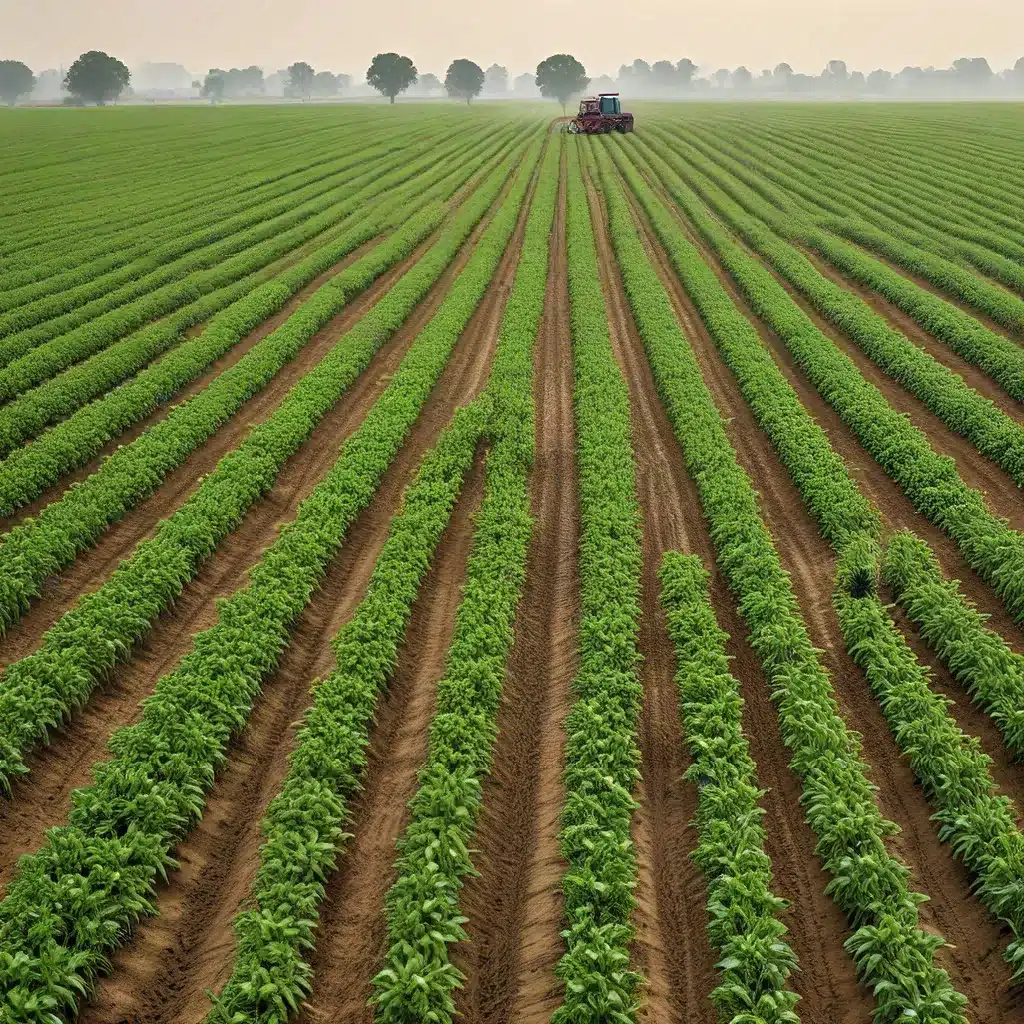
Revolutionizing Agricultural Efficiency with Sensor Networks
Sensor networks are transforming the agricultural landscape, ushering in a new era of precision farming that promises to address the global challenges of food security and environmental sustainability. By integrating advanced sensor technologies, Internet of Things (IoT) applications, and data-driven decision-making, sensor networks are empowering farmers to optimize resource utilization, enhance crop yields, and maintain traceability throughout the production process.
At the heart of this agricultural revolution are precision agriculture technologies, which leverage GPS, automation, and data analytics to make farming operations more efficient. These technologies enable the precise application of inputs like water, fertilizer, and feed, leading to more efficient agricultural production and reduced environmental impact.
Sensor Network Applications in Precision Agriculture
Sensor networks are the backbone of precision agriculture, enabling the collection, analysis, and real-time response to a wealth of data from the field. These networks can be deployed across various agricultural domains, each with its unique set of benefits:
Crop Monitoring and Management
Sensor-enabled crop monitoring systems track factors like soil moisture, nutrient levels, and environmental conditions, allowing farmers to make informed decisions about irrigation, fertilization, and pest management. By automating these processes, sensor networks help optimize input usage, minimize waste, and maximize crop yields.
Livestock Tracking and Health Monitoring
In livestock operations, sensor networks can be used to monitor the health and behavior of individual animals. Activity monitors on dairy cows, for instance, can collect data on rumination patterns, heat cycles, and other indicators of well-being, enabling early detection of illness and improved herd management.
Precision Irrigation and Water Management
Wireless sensor networks deployed in fields can continuously monitor soil moisture and weather conditions, triggering automated irrigation systems to deliver water only when and where it’s needed. This targeted approach reduces water consumption, minimizes runoff, and ensures optimal plant growth.
Traceability and Supply Chain Optimization
Sensor-equipped supply chain systems can track the movement of agricultural products from the field to the consumer, providing traceability and transparency throughout the production process. This enhanced visibility helps ensure food safety, reduce waste, and optimize logistics.
Challenges and Considerations in Sensor Network Design
While the benefits of sensor networks in precision agriculture are widely recognized, the successful implementation of these systems involves navigating several key challenges and design considerations:
Network Topology and Architecture
The choice of network topology, such as star, mesh, or hybrid, can significantly impact the performance, reliability, and scalability of the sensor network. Factors like range, power consumption, and data throughput must be carefully evaluated to ensure the network can effectively meet the demands of the agricultural application.
Energy Management and Power Efficiency
Sensor nodes in agricultural settings are often deployed in remote, hard-to-access locations, making power management a critical design consideration. Strategies such as energy-efficient hardware, duty cycling, and renewable power sources can help extend the operational lifespan of the sensor network.
Security and Data Privacy
As sensor networks collect and transmit sensitive agricultural data, security and data privacy become paramount concerns. Robust encryption, access control, and secure data storage protocols must be implemented to protect against cyber threats and ensure compliance with regulatory requirements.
Connectivity and Interoperability
Seamless connectivity and interoperability between sensor nodes, gateways, and cloud-based platforms are essential for enabling real-time data processing, remote monitoring, and centralized decision-making. Standards-based communication protocols and open-source software can facilitate the integration of diverse sensor technologies.
Emerging Trends and Future Developments
The rapid advancements in sensor technologies, IoT, and data analytics are driving the continued evolution of sensor networks in precision agriculture. Some of the emerging trends and future developments include:
Artificial Intelligence and Machine Learning
Artificial Intelligence (AI) and Machine Learning (ML) algorithms are being increasingly integrated into sensor networks to enable intelligent data analysis, predictive modeling, and autonomous decision-making. These technologies can help farmers optimize resource allocation, anticipate crop and livestock issues, and make more informed management decisions.
Edge Computing and Distributed Intelligence
Edge computing and distributed intelligence are gaining traction in sensor network design, allowing for real-time data processing and decision-making closer to the point of data collection. This approach can reduce latency, improve responsiveness, and mitigate the need for constant cloud connectivity in remote agricultural settings.
Sensor Fusion and Multi-Modal Data Integration
The integration of multi-modal sensor data, such as satellite imagery, weather forecasts, and soil analysis, can provide a more comprehensive and holistic understanding of agricultural systems. Sensor fusion algorithms can synthesize these diverse data sources to deliver enhanced insights and optimize precision farming practices.
Sustainable and Biodegradable Sensor Nodes
As environmental consciousness grows, there is an increasing focus on developing sustainable and biodegradable sensor nodes that minimize the ecological footprint of sensor networks. These emerging technologies leverage renewable materials, energy harvesting, and environmentally friendly manufacturing processes to support the long-term sustainability of precision agriculture.
Embracing the Future of Precision Agriculture
Sensor networks are poised to play a pivotal role in the future of precision agriculture, driving advancements in yield optimization, resource management, and supply chain traceability. By harnessing the power of data-driven decision-making and emerging technologies, sensor networks can help the agricultural sector meet the growing global demand for food while preserving the natural environment.
As the sensor network landscape continues to evolve, the https://sensor-networks.org/ platform will remain at the forefront, providing the latest insights, research, and industry developments to help professionals, researchers, and enthusiasts navigate the exciting future of precision farming. Stay informed and engaged as we explore the transformative potential of sensor networks in the realm of sustainable and efficient agriculture.